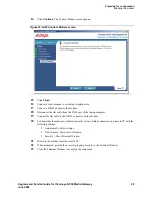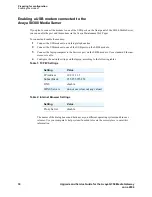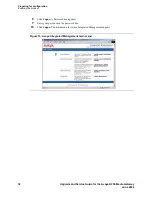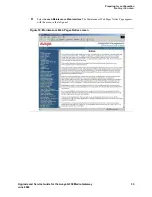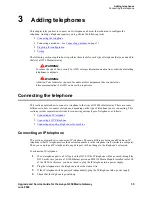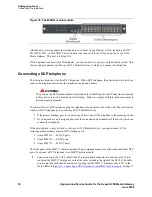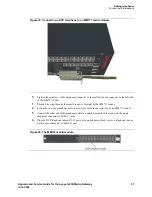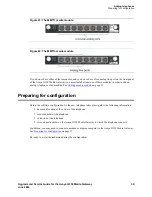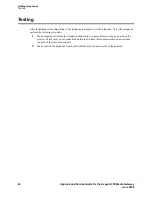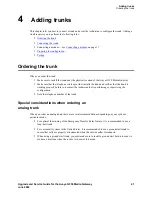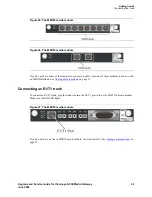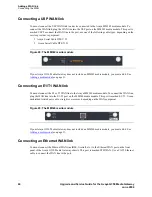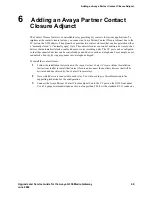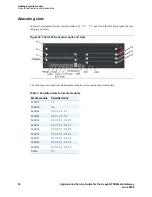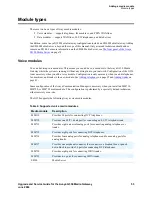
Adding telephones
Connecting the telephone
38
Upgrade and Service Guide for the Avaya G350 Media Gateway
June 2004
Figure 21: The MM712 media module
Figure 22: The MM717 media module
If you do not have any of these modules, you must install at least one of them in order to add a DCP
telephone. See
Adding a media module
on page 51.
u
Connecting an analog telephone or fax machine
This section explains how to connect an analog telephone or fax machine. With an analog telephone, the
physical port to which you connect the telephone determines the telephone’s extension number.
To connect the new analog telephone or fax machine, plug the telephone or fax machine into a network
jack or station wire that is wired to an analog port on the Avaya G350 Media Gateway.
•
If the project manager gave you a preassigned port, connect the telephone or fax machine to the
preassigned port.
•
If you do not have a preassigned port, note the extension and port number of the port to which you
connect the telephone or fax machine.
If the network jack is not yet wired to the Avaya G350 Media Gateway, you must connect it. The Avaya
G350 Media Gateway front panel contains two analog line ports. These ports are marked LINE above
each port, and 2 and 3 beneath each port, respectively.
NOTE:
The leftmost LINE analog telephone port on the G350 front panel forms a mechanical
analog relay with the TRK port next to it. This relay can be configured to provide
emergency transferred telephone service in the case of a power outage or disconnection
from an external media server. Therefore, the analog telephone connected to LINE is
usually installed for this emergency purpose. Regular analog telephones on the network
are usually connected to other analog ports.
In addition, the following Avaya media modules contain analog ports:
•
Avaya MM711 — contains eight analog ports that you can use for either telephone and fax lines
or trunk lines
•
Avaya MM714 — contains four analog line ports and four analog trunk ports






